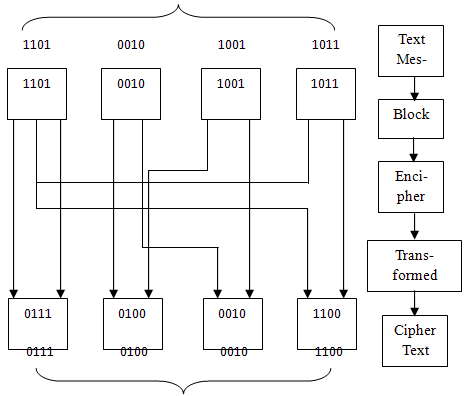| [1] | D. Kahn, Codebreakers: The Story of Secret Writing, Macmillan, 1967 |
| [2] | H. Feistel, "Cryptographic coding for data bank privacy," IBM Corp. Res. Rep. RC 2827, Mar. 1970. (I-B4, III-B, SFR) |
| [3] | Diffie, W. & Hellman, M. E. (1976), ‘New directions in cryptography’, IEEE Trans. Inform. Theory IT-22 (6) 644–654 |
| [4] | Signatures and Public-Key Cryptosystems”, Communications of the ACM 21,2 (Feb. 1978), 120-126 |
| [5] | T. El Gamal. A public key cryptosystem and signature scheme based on discrete logarithms. IEEE Trans. Inform. Theory, 31:469--472, 1985 |
| [6] | National Institute of Standards and Technology, NST FIPS PUB 186, Digital Signature Standard, U.S. Department of Commerce, May, 1994 |
| [7] | J. Nechvatal, E. Barker, L. Bassham, W. Burr, M. Dworkin, J. Foti and E.Roback, “Report on the Development of the Advanced Encryption Standard (AES)” , Journal of Research of the National Institute of Standards and Technology, 2000,Volume 106, pp. 511–576 |
| [8] | Dworkin, M., "Recommendation for Block Cipher Modes of Operation - Methods and Techniques", NIST Special Publication 800-38A, December 2001 |
| [9] | CNSS Policy No. 15, Fact Sheet No. 1, National Policy on the Use of the Advanced Encryption Standard (AES) to Protect National Security Systems and National Security Information , June 2003 |
| [10] | N. Ferguson, R. Schroeppel, D. Whiting, “A simple algebraic representation of Rijndael “, Selected Areas in Cryptography, Proc. SAC 2001, Lecture Notes in Computer Science 2259, pp. 103–111, Springer Verlag, 2001 |
| [11] | K. Aoki and H. Lipmaa, “Fast Implementations of AES Candidates”, Third Advanced Encryption Standard Candidate Conference, 2000, pages 106–120 |
| [12] | H. Lipmaa, Fast Implementations of AES and IDEA fro Pentium 3 and 4, October 2005, http://home.cyber.ee/helger/ implementations |
| [13] | A. Hodjat, I. Verbauwhede, “A 21.54 Gbit/s fully pipelined AES processor on FPGA”, Field–Programmable Custom Computing Machines 2004 (FCCM’04), 12th Annual IEEE Symposium, pages 308 – 309 |
| [14] | B. Schneier, J. Kelsey, D. Whiting, D. Wagner, C. Hall and N. Ferguson, “Performance Comparison of the AES Submissions”, Proc. Second AES Candidate Conference, NIST, 1999, pp. 15-34 |
| [15] | A. Lenstra, Key Length, Contribution to “The Handbook of Information Security”, 2004, http://cm.bell-labs.com/who/akl/key_lengths.pdf |
| [16] | ECRYPT Yearly Report on Algorithms and Keysizes 2005, http://www.ecrypt.eu.org/documents/D.SPA.16- 1.0.pdf |
| [17] | J. Buchmann, Einf¨uhrung in die Kryptographie, Springer, 2001, ISBN: 3-540-41283-2, also available in English ISBN: 0-387-21156-X |
| [18] | K. Aoki et., al. “Camellia: A 128-Bit Block Cipher Suitable for Multiple Platforms- Design and Analysis”, Selected Areas in Cryptography 2000, pp39–56 |
| [19] | Matsui, M., Nakajima, J., and S. Moriai, "A Description of the Camellia Encryption Algorithm", RFC 3713, April 2004 |
| [20] | NIST, FIPS PUB 197, "Advanced Encryption Standard (AES)," November 2001.http://csrc.nist.gov/publications /fips/fips197/fips-197 |
| [21] | Frankel, S., Glenn, R., and S. Kelly, "The AESCBC Cipher Algorithm and Its Use With IPsec," RFC 3602, September 2003 |
| [22] | A. Lenstra, Unbelievable Security, 2001, http://www.win. tue.nl /~klenstra/aes_match.pdf |
| [23] | The NESSIE project (New European Schemes for Signatures, Integrity and Encryption), http://www.cosic.esat. kuleuven.ac.be/nessie/ |
| [24] | NIST Computer Security Division, http://csrc.nist.gov/ |
| [25] | Arjen Lenstra and E. Verheul, ”Selecting Cryptographic Key Sizes”, 2001, http://citeseer.ist.psu.edu/287428.html |
| [26] | RSA Security, PKCS #1: RSA Cryptography Standard, http://www.rsasecurity.com/rsalabs/node.asp?id=2125 |
| [27] | Ilya Mironov Microsoft Research, Silicon Valley Campus mironov@microsoft.com November 14, 2005 |
| [28] | www.nsa.gov |
| [29] | www.iacr.org |
| [30] | www.ipa.go.jp/security |







 Abstract
Abstract Reference
Reference Full-Text PDF
Full-Text PDF Full-Text HTML
Full-Text HTML